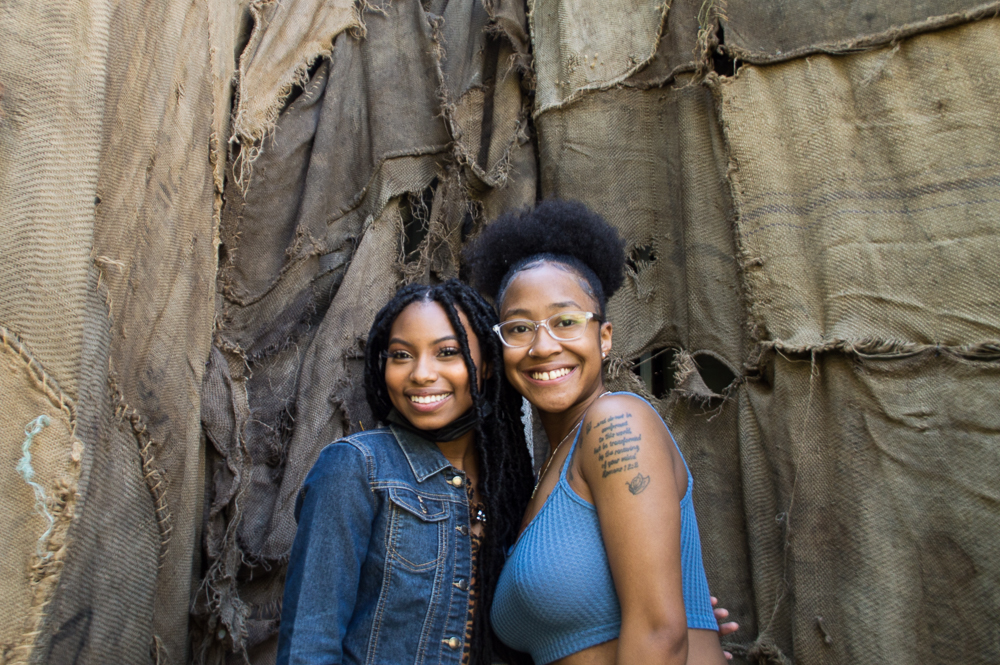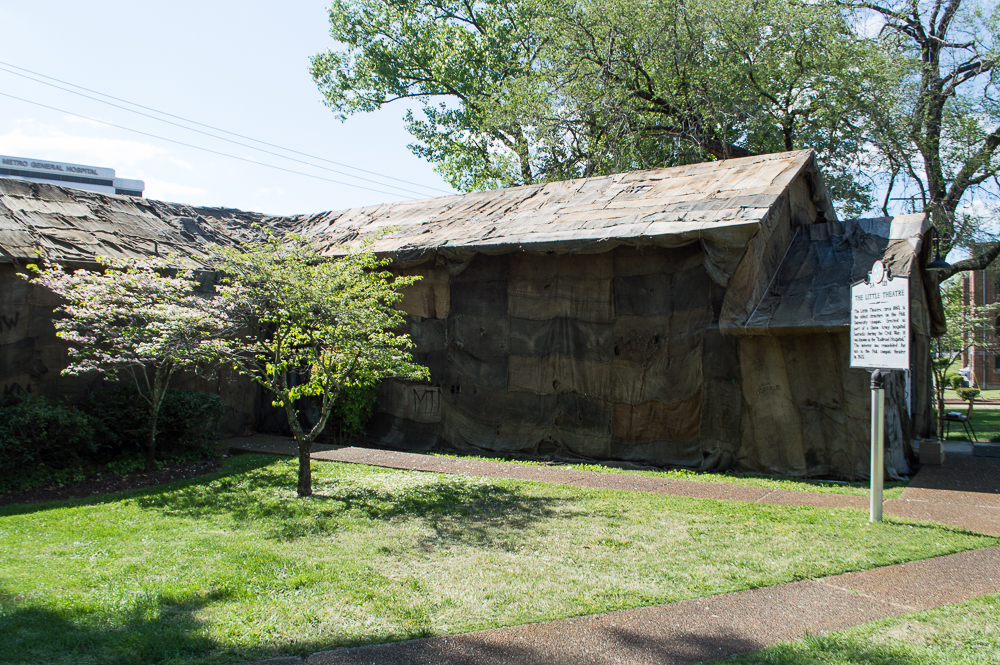
People driving past Fisk University’s campus on Dr. D.B. Todd Jr. Boulevard might notice one of the historic buildings draped in burlap sacks. The installment is the work of an African artist, assembled by students.
Over the last three weeks, freshmen Aaliyah Riddle and Summer Jenkins have sat down every day to sew.
“We hand sewed it, we hand stitched it,” Jenkins says. “It was a needle about, what, 3, 4 inches? It was a really big needle.”
Riddle nods in agreement. “Yes,” she says, “and we had a big spool of thread.”
More: See all of WPLN’s coverage of Fisk University.
They’re two of many students who have done the painstaking work of connecting burlap sacks together, piece by piece.
 Paige Pfleger WPLN News
Paige Pfleger WPLN NewsA jute sack sewn into the art installation on Fisk’s campus was once used to transport cocoa.
“Seeing it from two little patches, literally I think we only sewed together about four pieces that day,” she says, “and I was like, ‘You’re about to wrap a building with this?'”
The project is part of the work of artist Ibrahim Mahama. He uses symbolically loaded material associated with trade and labor to question the idea of ownership.
Mahama spoke to the students who sewed together the work via Zoom from his home in Ghana.
“I more or less wanted to use materials that were connected to the fundamental condition of the society,” Mahama says, “that could be sewn together with a series of people.”
The sacks are made of jute and were once used to ship cocoa and coffee. He says laborers’ hands touch the sacks as they travel around the world, leaving tears and scars. He wanted to recreate that with his traveling exhibition by having the sacks sewed and resewed to cover different structures around the country.
 Paige Pfleger WPLN News
Paige Pfleger WPLN NewsIbrahim Mahama’s art installation is draped over the oldest building on Fisk’s campus, called the Little Theater.
In Nashville the quilted tapestry is draped over a slice of Black history: the Little Theater. It was a Civil War army barracks that was later transformed into the Fisk Free Colored School where newly freed people took classes.
“By doing this collaborative experience of sewing these panels together, we’re able to uncover that history and be able to tell the story of this living monument.”
He hopes the symbolism of the work and the significance of the building will provide a space to discuss the impacts of colonialism and systemic racism.
The sacks will cover the Little Theater until May 31, then be sent on to another city, for new hands to sew it into a new form.

